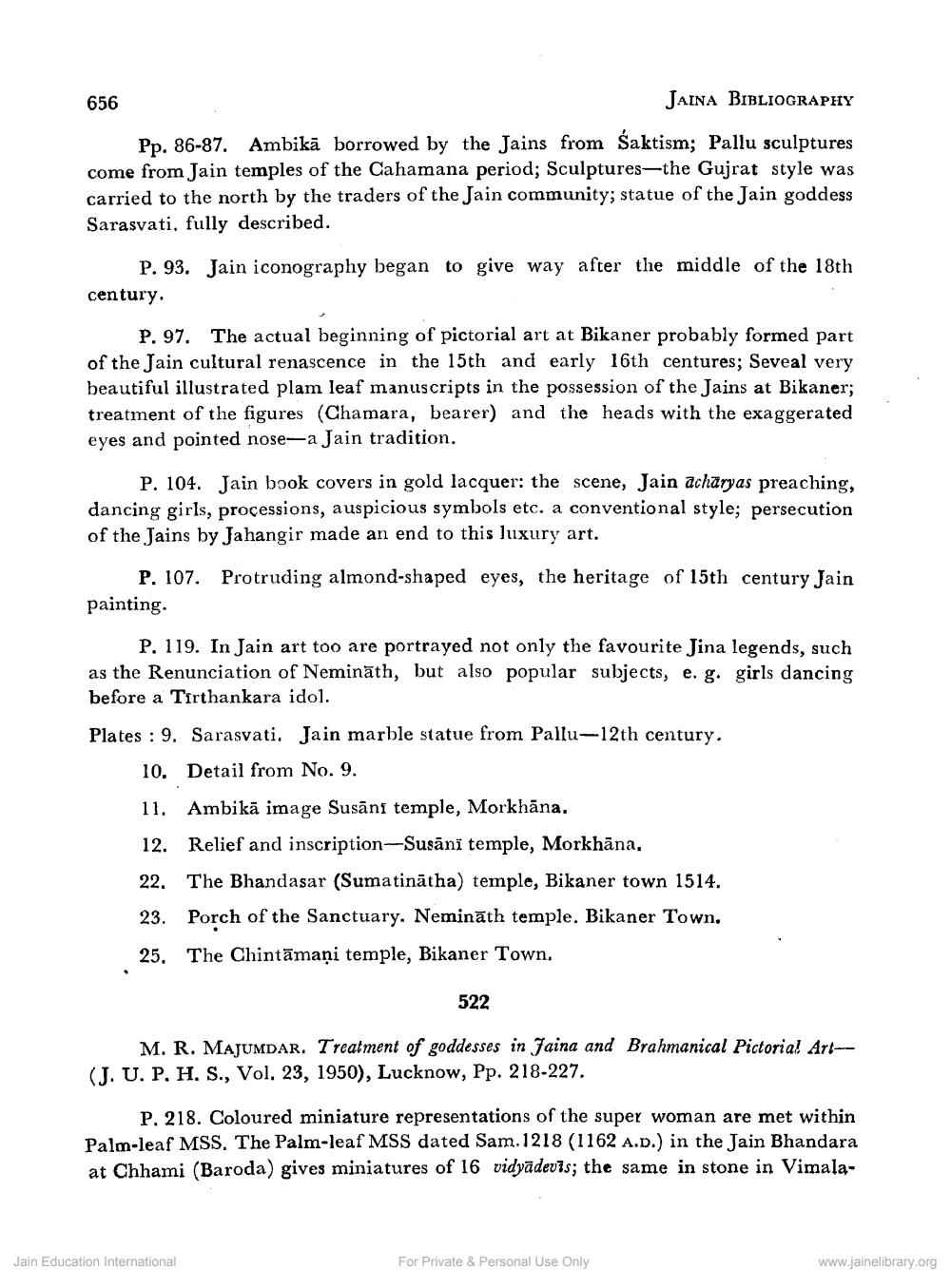________________
656
JAINA BIBLIOGRAPHY
Pp. 86-87. Ambikā borrowed by the Jains from Saktism; Pallu sculptures come from Jain temples of the Cahamana period; Sculptures-the Gujrat style was carried to the north by the traders of the Jain community; statue of the Jain goddess Sarasvati, fully described.
P. 93. Jain iconography began to give way after the middle of the 18th century.
P. 97. The actual beginning of pictorial art at Bikaner probably formed part of the Jain cultural renascence in the 15th and early 16th centures; Seveal very beautiful illustrated plam leaf manuscripts in the possession of the Jains at Bikaner; treatment of the figures (Chamara, bearer) and the heads with the exaggerated eyes and pointed nose-a Jain tradition.
P. 104. Jain book covers in gold lacquer: the scene, Jain acharyas preaching, dancing girls, processions, auspicious symbols etc. a conventional style; persecution of the Jains by Jahangir made an end to this luxury art.
P. 107. Protruding almond-shaped eyes, the heritage of 15th century Jain painting.
P. 119. In Jain art too are portrayed not only the favourite Jina legends, such as the Renunciation of Nemināth, but also popular subjects, e. g. girls dancing before a Tirthankara idol. Plates : 9. Sarasvati. Jain marble statue from Pallu-12th century.
10. Detail from No. 9. 11. Ambikā image Susāni temple, Morkhāna. 12. Relief and inscription--Susānī temple, Morkhāna, 22. The Bhandasar (Sumatinātha) temple, Bikaner town 1514. 23. Porch of the Sanctuary. Nemināth temple. Bikaner Town, 25. The Chintāmaņi temple, Bikaner Town.
522
M. R. MAJUMDAR. Treatment of goddesses in faina and Brahmanical Pictorial Art-- (J. U. P. H. S., Vol. 23, 1950), Lucknow, Pp. 218-227.
P. 218. Coloured miniature representations of the super woman are met within Palm-leaf MSS. The Palm-leaf MSS dated Sam.1218 (1162 A.D.) in the Jain Bhandara at Chhami (Baroda) gives miniatures of 16 vidyadevīs; the same in stone in Vimala
Jain Education International
For Private & Personal Use Only
www.jainelibrary.org




